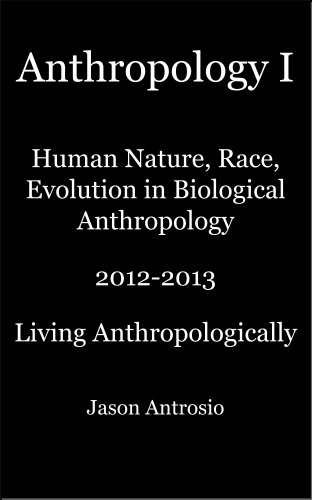An updated 2012-2013 introduction and perspective on biological anthropology, illustrated through the themes of human nature, race, and evolution. Emphasizes biology and evolution as dynamic processes and anthropological documentation of human possibility. Chapters include
1.1 Anthropology and Human Nature
Anthropology’s search for human nature emphasized shared capacities in particular cultures. But humans are always in process--there is no human nature.
1.2 Evolution and Natural Selection, Anthropologically
Darwin wrote of “descent with modification.†Evolution and natural selection describe natural processes, but there are potential problems with these terms.
1.3 Biological Anthropology and Racism
To understand human evolution, from hominin species classification to Denisovan debates, it is essential to understand biological anthropology and racism.
1.4 Human Skulls: Boas Head Shape Studies Revalidated
Human head shape is considerably plastic--there is no natural or genetically-determined head shape. The Boas head shape studies have been revalidated.
1.5 Attacking Anthropology and the Race Revival
Anthropology successfully debunked race, but we now see race revival, from “A Family Tree in Every Gene†to attacking anthropology. How did this happen?
1.6 Race Reconciled Re-Debunks Race
"Race Reconciled: How Biological Anthropologists View Human Variation" features an important set of articles re-debunking race.
1.7 Race Becomes Biology, Inequality Embodied
Anthropology reveals how race becomes biology, intertwining social categories and biology. This is dynamic and developing biology, not genetic determinism.
1.8 So Many Primates for Primatology
Primates vary by species, group, and individually. Primatology reveals there is no single primate behavior pattern at the base of human evolution.
1.9 Bipedalism is Also Called Walking
Habitual bipedalism–not big brains–differentiated hominid ancestors from apes. But walking is a learned behavior, not easily explained by selection.
1.10 Stone Tools for 2.5 Million Years
Stone tools date to 2.5million years ago, yet direct ape-to-human comparisons persist. As Jonathan Marks comments: “We evolved, get over it.â€
1.11 Denisovans, Neandertals, Archaics as Human Races
Were Denisovans and Neandertals ancestors of modern humans? Different species? Or sub-species, like races? Anthropology shows porous species and admixture.
1.12 More Mothers than Mitochondrial Eve
Embracing Mitochondrial Eve was problematic for anthropology. Recent admixture studies show anthropology should recapture multiregionalism.
1.13 Human Biologies and the Biocultural Naturenurtural
Human biologies are biocultural platforms of possibility. Anthropology reveals the naturenurtural of humanity rather than determining genes and instincts.







